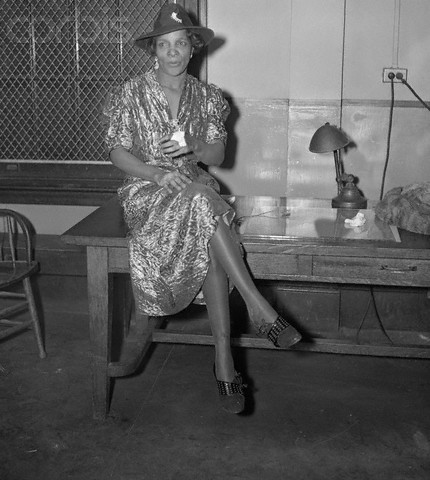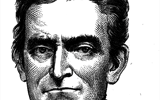I Wish I Knew More About #3: Madame Stephanie St. Clair
No one has yet written a biography about Madame Stephanie St. Clair and I can hardly believe it. I was introduced to Madame St. Clair through watching the “Cotton Club.” She’s only mentioned in passing. I was born and raised in New York City and even worked for a couple of years in Harlem. Yet I heard nothing about this amazing black woman’s life and legacy. Her Wikipedia page is woefully lacking and describes her as “a female gang leader who ran numerous criminal enterprises in Harlem, New York in the part of the 20th century.” This description of St. Clair doesn’t do justice to her life.
I am very interested in Madame St. Clair because as LaShawn Harris (2008) has written:
“St. Clair’s life symbolizes the often untold narratives and experiences of black men and women who used the informal economy and crime as ways to creatively confront race, gender, and class oppression (p.70).”
We don’t really know very much about St. Clair’s early life. Some sources suggest that she was born in either Martinique or Guadeloupe in the 1880s. Madame St. Clair herself always maintained that she was born in France; in fact she spoke fluent French as well as Spanish. She may have arrived in Harlem around 1912.
In the 1920s, Madame St. Clair would become known as the “numbers Queen of Harlem.” ‘Numbers’ or ‘Policy’ (the illegal lottery) was hugely popular in Harlem and also in other cities across the country (such as Chicago and Pittsburgh). LaShawn Harris (2008) offers a good description of how policy operated:
The term “policy” refers to number games in which numbers are used to select winners. The player picked a set of three-digit numbers between 000 and 999 and hoped their numbers matched the winning numbers. Winning numbers were randomly selected, sometimes by policy operators and sometimes from published numbers from the New York Stock Exchange or bank clearing totals (Light, 1977, 894). The numbers enterprise depended on the labor of many individuals. The banker was the central player in the operation. He or she headed and financed the operation and employed a group of numbers runners and others to collect policy slips and pay winners. “The banker was a mystery man. The majority of players and collectors often knew that an individual was their responsible banker, without having a speaking acquaintanceship with him” (McKay 1990, 13). Runners or collectors usually collected numbers slips. Numbers runners or collectors were ordinary individuals “whose normal livelihood brought [them] into contact with large numbers of people” (Dewey 1974, 99). Most runners were usually working-class and poor men who either worked full time or part time for the banker.
St. Clair was the most prominent and successful female banker in Harlem in the 20s. She hired Bumpy Johnson who became her enforcer and would eventually go on to eclipse her in the numbers game in the 1940s when he made a deal with the white Mafia to allow them some control of the Harlem policy racket.
In the 1920s and 30s, Madame Queenie’s power and wealth could not be underestimated. She earned over $200,000 a year and employed hundreds of people. She wore fur coats and lived at 409 Edgecombe Ave in the most exclusive apartment building in the Sugar Hill section of Harlem. Her neighbors included Walter White, Thurgood Marshall, W.E.B. Dubois and other members of the black elite.
The following anecdote from the book “Playing the Numbers: Gambling in Harlem between the Wars” offers a snapshot of St. Clair’s personality:
Henry Moon sat on the edge of his chair in Madame Queen’s tastefully modern apartment at 409 Edgecombe Avenue. In 1933, this fourteen-storey building was the tallest on Sugar Hill, Harlem’s ritziest area, which sloped north from 145th Street to 155th Street and was bounded by Amsterdam Avenue to the west and Edgecombe Avenue to the east. It was a few blocks of stately apartment buildings and uniformed doormen overlooking the Valley, as Central Harlem, densely populated with mostly poor blacks, was known. Quite simply, then, 409 Edgecombe was the best address in Harlem. At various times, W. E. B. Du Bois, the preeminent black intellectual and for decades editor of the Crisis, Walter White and Roy Wilkins, both officials of the National Association for the Advancement of Colored People, and the painter Aaron Douglas all lived there. So too did Madame Queen, who had amassed a fortune from “numbers,” the gambling game that, in the early 1920s, had taken Harlem by storm. She was a numbers “banker”—the most successful bankers were known as Kings and Queens—and it was scores of thousands of Valley residents wagering, and losing, their pennies and nickels that had enabled Madame Queen to reach the heights of Harlem. Some on Sugar Hill looked askance at the way this middle-aged woman had made her money, viewing her as little better than a racketeer, but Madame Queen never had any doubts about her position and shrugged off any such aspersions. Her regal presence and sense of entitlement made it abundantly clear that she belonged on Edgecombe Avenue.
Madame Queen stalked the generously proportioned room. She was “a slim figure, dark and sinister, clad as always in a pale gray dress.” Her hair was not straightened and “her eyes were flashing like orbs of polished anthracite.” As she strode up and down, Madame Queen spoke animatedly. Later on, Moon would remember “the words cascading from her lips in a furious stream.” Her audience was transfixed. There were two bodyguards, both of whom obviously carried guns and one of whom had just been released from prison. A young woman, trying to convince Madame Queen to hire her as a secretary, “sat speechless with terror, her lips quivering like jelly atop a throbbing motor.” Moon lit a cigarette and inhaled deeply, letting the nicotine course through his veins and relax his body. After all, as he later wryly noted, this “was a time to appear nonchalant.”
“WHAM!” Madame Queen thumped her fist on the heavy plate glass covering the table. The young woman started, her timid face a shaking “muddy colored mass.” One gunman “blinked,” the other stared ahead impassively. Moon “flattened the cigaret held tightly in his fingers.” Madame Queen let loose a torrent of words: “To think that dey should put it in ze paper that goddam Dutchman keel one of my men. And put me on de spot? Me? Me? Don’t everybody know I ain’t scared nothing! Run me out of beezness? Me?” She laughed, and “her laughter was no less sinister than her boastings.”
St. Clair was heavily surveilled and harassed by police even though she paid bribes to keep them at bay. Harris (2008) details her encounters with the New York Police Deparment (NYPD):
As a prominent numbers banker, St. Clair, like many African American policy leaders, was under constant surveillance by New York City police. On December 30, 1929, New York City police officers arrested the “Digit Queen” for possession of policy slips. St. Clair was arrested at 117 West 141st Street, where an alleged “policy bank was [being] operated” (NYAN, March 19, 1930). Policemen claimed that St. Clair had in her possession a large quantity of policy slips. During her trial, St. Clair admitted to being a former policy banker and claimed that she “was marked for a jail term because of her fight for courtesy and freedom from annoyance [of] the police” (NYAN, January 1, 1930; December 10, 1930). On March 14, 1930, St. Clair was convicted and sentenced to eight months in the workhouse on Welfare Island. A year later, she was released and testified before Samuel Seabury’s commission. The Seabury Commission investigated corruption in the Magistrate’s Court of the Bronx and Manhattan and the New York City Police Department. Between 1930 and 1931, the Seabury Commission held both private and public hearings and heard the testimonies of judges, lawyers, policemen, and ordinary citizens.11 Witnesses testified and exposed corruption in the New York City Police Department and the court system, revealing the conspiracy of judges, lawyers, and police to extort money from defendants facing trial.
St. Clair privately testified that she had “sent payments of $100 and $500 by a man known as ‘Mustache’ Jones to a lieutenant of the Sixth division.” She also admitted to “paying plainclothes cops a total of $6,000” (NYAN,
December 10, 1930). Despite paying the police department to protect her workers from being arrested, St. Clair claimed that her employees were constantly harassed and arrested by law officials. From her testimony, a lieutenant and thirteen men were suspended from the New York Police Department (New York Age, December 13, 1930).
Once Madame Queenie was released from prison, she decided to go to war against the police and others. She took out ads in the Amsterdam News and other black newspapers calling out corrupt cops, white mobsters and even some politicians. She also wrote a column in the Amsterdam News where she would offer “Know Your Rights” advice to her fellow black Harlemites. She railed against economic, social, and political injustice against black people. She was beloved by working-class black people for employing hundreds of people and investing in dozens of legitimate businesses in the community.
Once Prohibition ended, the white Mafia decided that it wanted to control the Harlem numbers game. St. Clair fought back and found herself in a war with mobster Dutch Shultz in particular. Their confrontations became increasingly violent. When Shultz was ambushed on orders from Lucky Luciano and lay dying at Newark City Hospital, St. Clair sent him a telegram that read: “As ye sow, so shall ye reap.” She signed it “Madame Queen.”
She married Harlem activist Sufi Abdul Hamid who she is accused of shooting in 1938 because he cheated on her. He survived the shooting and St. Clair maintained that they struggled and the gun went off accidentally. Harris (2008) writes about the incident:
“For shooting her husband, St. Clair was convicted of first-degree assault and possession of a concealed weapon. She was sentenced to ten years at the New York State Prison for Women at Bedford (p.64).”
There is no information about how long she actually served in prison and when she was released. Stephanie St. Clair is thought to have died in New York in 1969.
In order to understand the lives and experiences of black people in the late 19th through the mid-20th centuries, we need to reclaim the stories of women like Madame Stephanie St. Clair. Her story illuminates how some black people (especially black women) navigated a racist and sexist system in the U.S. that actively discriminated against them.
I really wish that I knew more about Madame Stephanie St. Clair…

